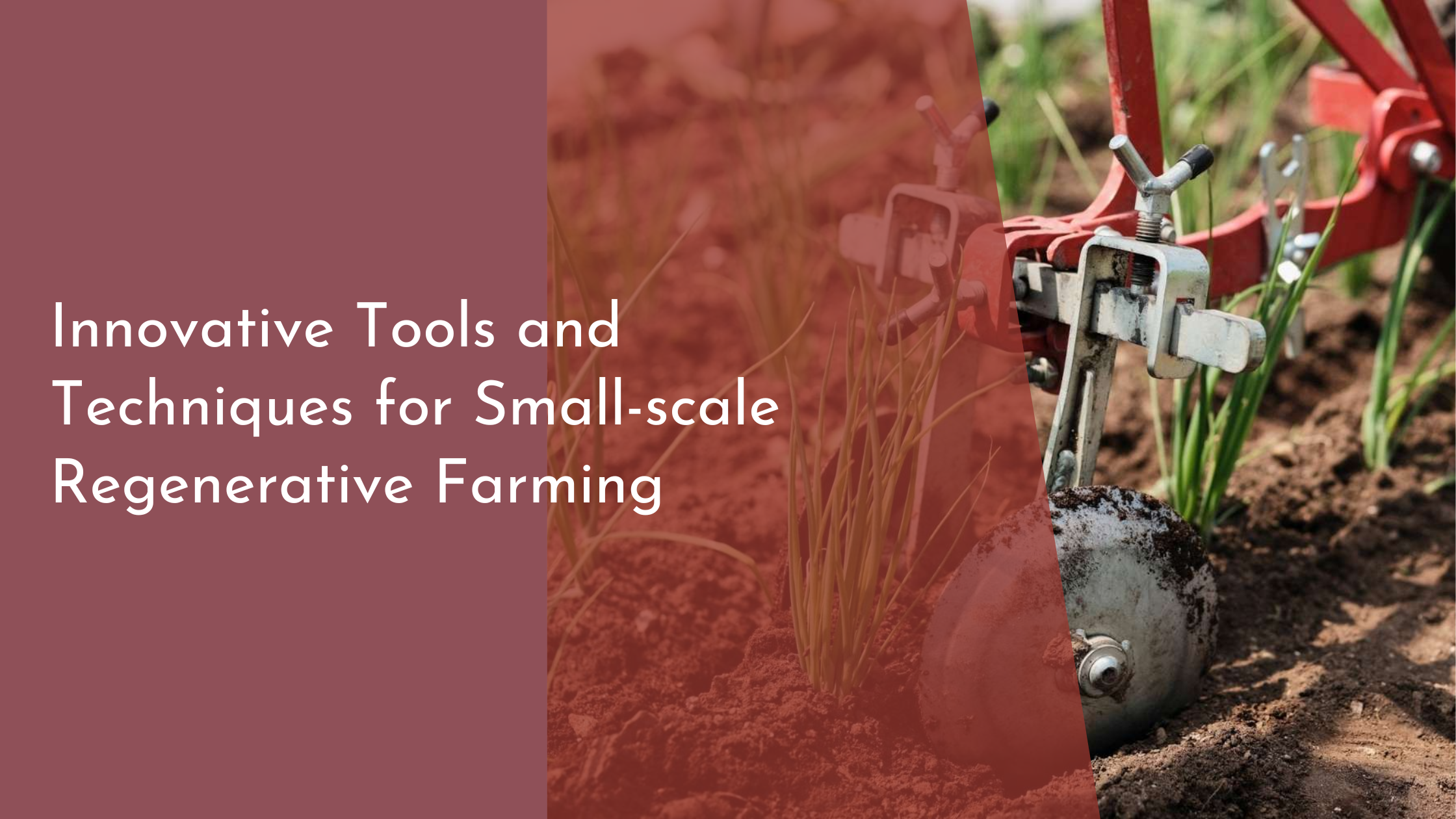Innovative Tools and Techniques for Small-scale Regenerative Farming
In recent years, regenerative agriculture has emerged as a promising solution for sustainable farming, offering a way to restore the health of our soils while maintaining productivity. This holistic approach not only benefits the environment but also small-scale farmers seeking to enhance their yields and livelihood. As technology advances, innovative tools and techniques are becoming available to aid these farmers in their regenerative journey. This article delves into the basics of regenerative agriculture, explores groundbreaking tools, examines innovative methods for soil improvement, and envisions a bright future for regenerative farming.
Exploring the Basics of Regenerative Agriculture
Regenerative agriculture is an approach to farming that focuses on replenishing and revitalizing the soil, enhancing biodiversity, and strengthening the ecosystem. Unlike conventional agriculture, which often depletes soil nutrients and harms the environment, regenerative practices aim to work in harmony with nature. By prioritizing soil health, farmers can create a resilient agricultural system that can withstand climate change and improve food security. Key principles include minimal soil disturbance, cover cropping, crop rotations, and reduced chemical inputs.
These practices result in a range of benefits, including increased organic matter in the soil, better water retention, and improved nutrient cycling. For small-scale farmers, adopting regenerative methods can lead to healthier crops and reduced dependency on artificial fertilizers and pesticides. The focus on biodiversity not only supports a myriad of life forms but also enhances the resilience of farm ecosystems, making them less susceptible to pests and diseases. By understanding the fundamentals of regenerative agriculture, farmers can make informed decisions that promote sustainability and productivity on their farms.
Cutting-edge Tools for Sustainable Small Farms
Technological innovation is playing a crucial role in advancing regenerative agriculture. Small-scale farmers now have access to tools that make sustainable farming practices more efficient and effective. One such tool is the no-till drill, which allows farmers to plant seeds without disturbing the soil structure, thereby reducing erosion and maintaining soil health. These drills are designed to work in various soil types, making them versatile for different farming conditions.
Another innovative tool is the use of digital platforms and mobile applications for farm management. These tools enable farmers to monitor soil conditions, weather patterns, and crop health in real time. For example, smartphone apps can provide data-driven insights that help farmers decide the optimal time for planting, watering, and harvesting. These technologies not only streamline farm operations but also promote more informed decision-making that supports regenerative practices.
Innovative Techniques for Soil Health Improvement
One of the cornerstones of regenerative agriculture is improving soil health, and farmers are employing innovative techniques to achieve this goal. Cover cropping is a popular method where farmers plant specific crops that enrich the soil with nutrients and organic matter. These crops, such as clover and vetch, can fix nitrogen in the soil, reduce erosion, and improve water infiltration. By using cover crops, farmers enhance the soil’s fertility naturally, reducing the need for chemical fertilizers.
Another technique gaining traction is composting and the use of biochar. Composting organic waste provides a rich source of nutrients for crops, while biochar—a form of charcoal—can sequester carbon and enhance soil structure. Both methods improve the soil’s microbial activity, which is crucial for nutrient cycling and plant growth. By adopting such innovative techniques, small-scale farmers can significantly improve soil health, leading to better crop yields and sustainability.
Embracing a Bright Future in Regenerative Farming
The future of regenerative farming is bright, fueled by continued innovation and a growing commitment to sustainable practices. As more farmers adopt regenerative techniques, the collective impact on the environment is substantial. With healthier soils, increased biodiversity, and reduced carbon footprints, regenerative agriculture holds the potential to mitigate the effects of climate change and ensure food security for future generations.
Furthermore, the support for regenerative agriculture is expanding, with governments, NGOs, and private sectors recognizing its benefits and investing in research, education, and infrastructure. This support not only empowers small-scale farmers but also encourages the widespread adoption of sustainable practices. As we embrace this bright future, the collaboration between technology and traditional farming knowledge will be key to realizing the full potential of regenerative agriculture.
Regenerative agriculture offers small-scale farmers a pathway to sustainable and productive farming by focusing on soil health and ecosystem balance. With the advent of innovative tools and techniques, these farmers have more resources than ever to implement regenerative practices effectively. As we continue to embrace and support this transformative approach, regenerative agriculture promises to be a beacon of hope for environmentally conscious and resilient farming practices worldwide. Through dedication and collaboration, we can look forward to a sustainable agricultural future that benefits both farmers and the planet.

